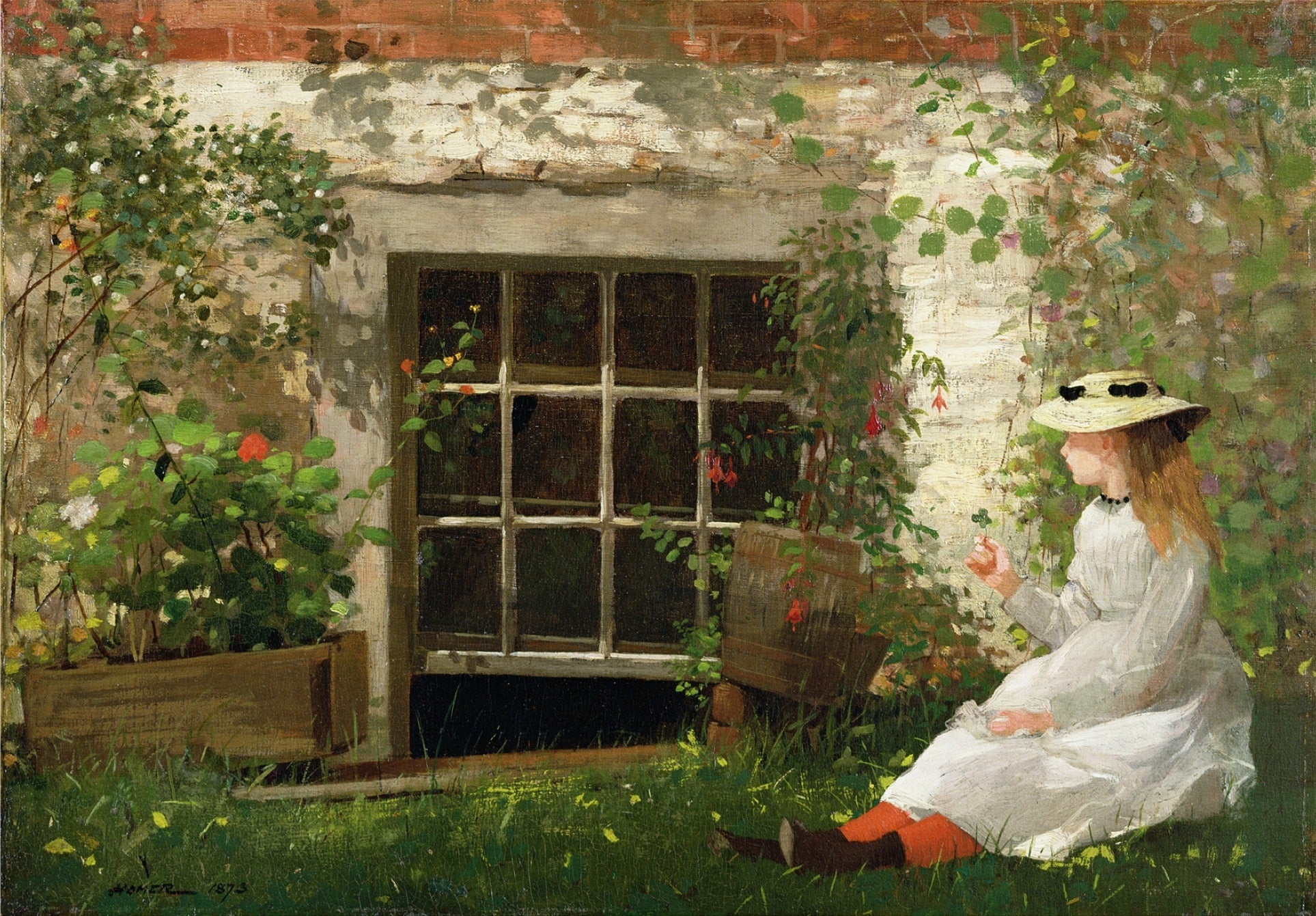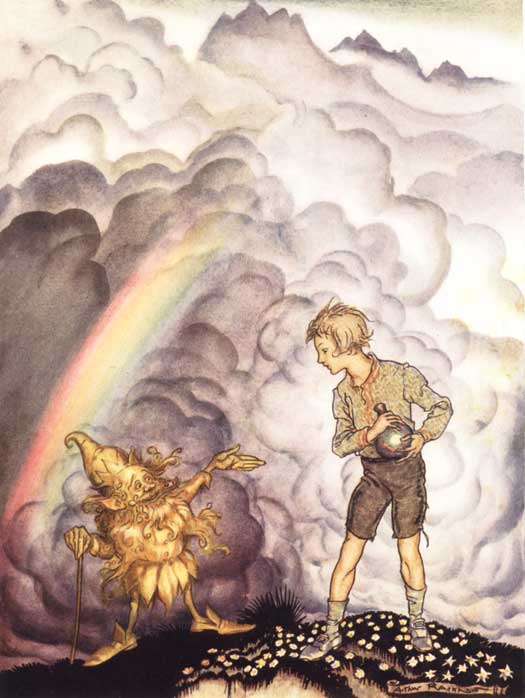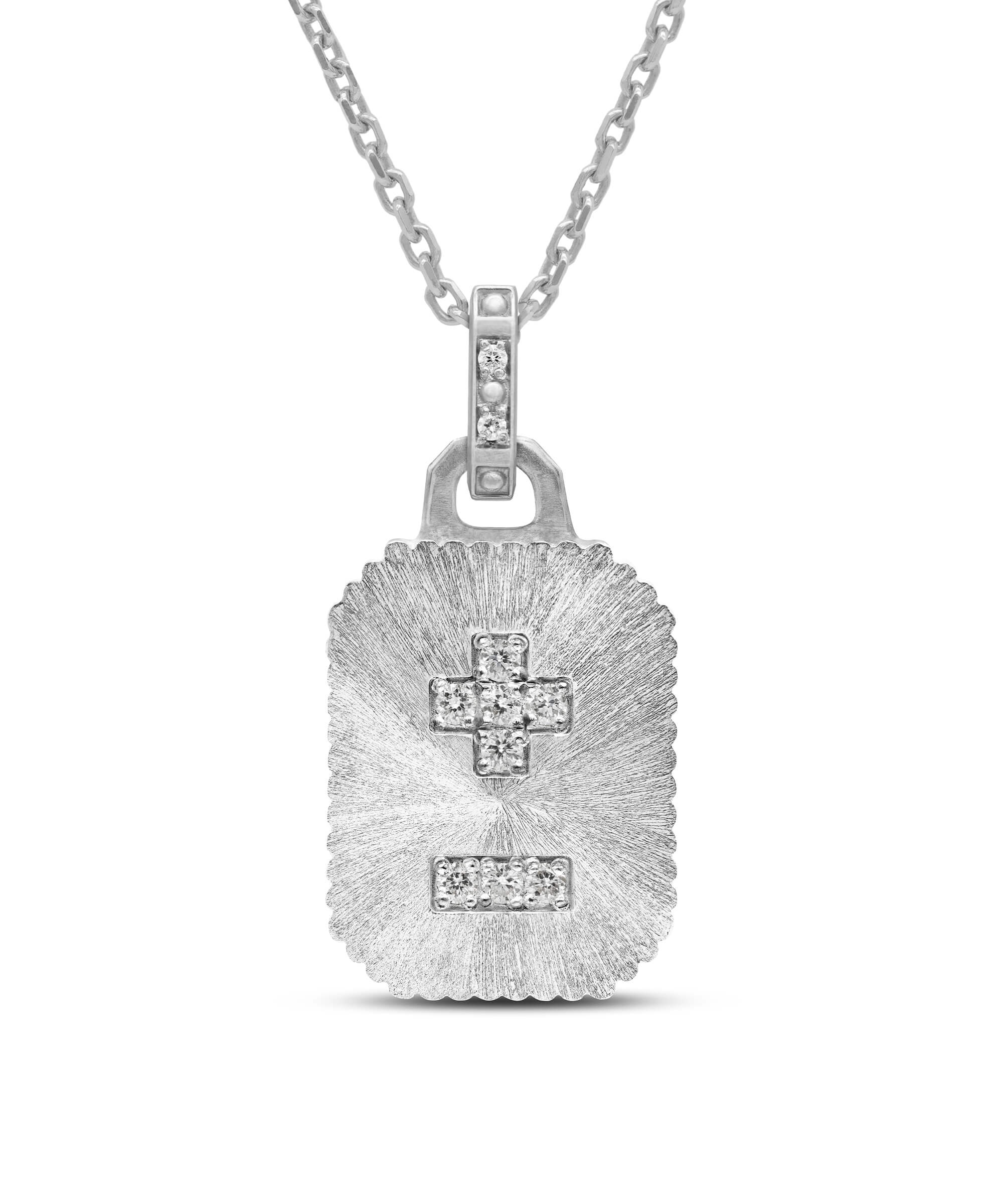In the realms where mystique and symbolic resonance elegantly entwine, the clover symbol emerges as a mystical talisman of profound importance. Beyond its botanical origins, the clover ascends to assume the mantle of a universal icon embodying luck, hope, and the enigmatic energies that govern the intricate waltz of existence. Charting a course from the annals of ancient legend to its contemporary allure, the symbolism of the clover tells a mesmerizing story that captures the mind and stirs the soul.
Amuletha™ Book of Symbols
Clover Symbol
Four-Leaf Clover by Winslow Homer
American painter Winslow Homer, celebrated for his landscapes and marine scenes, created a captivating watercolor titled "Four-Leaf Clover." This piece captures the delicate beauty of the clover, symbolizing hope and good luck, while showcasing Homer's meticulous attention to detail and profound appreciation for nature.

Four-Leaf Clover by Winslow Homer
American painter Winslow Homer, celebrated for his landscapes and marine scenes, created a captivating watercolor titled "Four-Leaf Clover." This piece captures the delicate beauty of the clover, symbolizing hope and good luck, while showcasing Homer's meticulous attention to detail and profound appreciation for nature.
CLOVER SYMBOL ORIGIN
The symbolism of the clover, especially the four-leaf variety, has a rich history rooted in ancient traditions. This small, green plant, often found in meadows, holds significant cultural meaning, particularly in Irish folklore. Ancient Celtic druids believed clovers could ward off evil spirits and bad luck. The three-leaf clover, or shamrock, was revered and, according to legend, used by St. Patrick to explain the Holy Trinity to the Irish.
The rare four-leaf clover, a mutation of the common shamrock, is famed for bringing good luck. Each of its leaves represents faith, hope, love, and luck. Its rarity—about one in 5,000—enhances its allure. Throughout history, clovers have been associated with various superstitions. In medieval times, finding a four-leaf clover was believed to grant the finder the ability to see fairies and mystical creatures. This belief persists, with the four-leaf clover symbolizing good fortune and protection against evil.
The symbolism of the clover extends beyond Irish folklore and finds resonance in various other cultures. In ancient China, the clover was considered a symbol of prosperity and peace, often associated with the balance of nature and harmony. Similarly, in Norse mythology, the clover was linked to the goddess Freya, symbolizing love and fertility. The clover's presence in these diverse cultures underscores its universal appeal as a positive emblem.
What does CLOVER symbolize
The clover symbol holds deep significance across various cultures and eras. Here are four of the most recognized interpretations of the meanings it gracefully embodies:
Luck
Widely acknowledged as a symbol of good fortune.
Resilience
Symbolizing the human spirit's capacity to overcome challenges and thrive despite adversity.
Hope
Each leaf of the clover symbolizes hope for the future.
Love
The clover embodies love and affection, bringing positivity to its bearer.
Cultural mention
The clover, a humble yet powerful symbol, holds a cherished place in both cultural and historical contexts. From ancient mythologies where it represented mystical properties and divine favor to its use in medieval protection charms and modern symbols of luck, the clover transcends its simple form to embody deep meanings. This universal appeal makes the clover an enduring symbol in art, history and spirituality, revered for its modest beauty and rich heritage.
St. Patrick and the Shamrock
According to legend, St. Patrick, the patron saint of Ireland, used the shamrock to explain the concept of the Holy Trinity to the Irish during his missionary work in the 5th century. The three leaves of the shamrock represented the Father, the Son, and the Holy Spirit, making it a powerful tool for illustrating this complex theological idea. This simple yet effective symbol helped convert many Irish people to Christianity and cemented the shamrock as a symbol of faith and Ireland itself. Over time, the shamrock became synonymous with Irish identity and heritage, celebrated every year on St. Patrick's Day as a symbol of national pride and religious faith.
St. Patrick depicted with shamrock in detail of stained glass window in St. Benin's Church, Kilbennan, County Galway, Ireland

St. Patrick depicted with shamrock in detail of stained glass window in St. Benin's Church, Kilbennan, County Galway, Ireland
The Irish Leprechaun and the Clover
Irish folklore is rich with tales of leprechauns, mischievous fairies known for hiding pots of gold at the end of rainbows. According to legend, carrying a four-leaf clover would protect one from the tricks of leprechauns and guide the finder to hidden treasures. This belief reinforced the clover's association with protection and luck. The four-leaf clover's rarity made it a valuable charm for those seeking fortune and safety from the leprechauns' mischief. Today, the leprechaun and the four-leaf clover are iconic symbols of Irish culture and are often featured together in stories, decorations, and celebrations, particularly around St. Patrick's Day.
*John Ruskin "The King of the Golden River", illustrated by Arthur Rackham

*John Ruskin "The King of the Golden River", illustrated by Arthur Rackham
Demeter and the Clover
In Greek mythology, Demeter, the goddess of agriculture and fertility, is often associated with the harvest and the nurturing of crops. While the clover is not explicitly mentioned in many Greek myths, it is symbolically linked to Demeter through its association with agriculture, fertility, and abundance. The clover, particularly the lush, green fields of clover, represents the fertility of the earth and the bounty of the harvest that Demeter provides. Ancient Greeks believed that invoking Demeter's blessings over their fields would ensure a plentiful harvest, and fields of clover were seen as a sign of her favor. The clover's ability to thrive and enrich the soil made it a natural emblem of Demeter's nurturing qualities and the agricultural prosperity she bestowed upon her followers.
*The Return of Persephone by Frederic Leighton
The Return of Persephone by Frederic Leighton captures the dramatic moment when Demeter is reunited with her daughter Persephone. Although the focus is on Persephone, Demeter's presence on the right is significant, symbolizing the restoration of fertility and the cycle of life and death.

*The Return of Persephone by Frederic Leighton
The Return of Persephone by Frederic Leighton captures the dramatic moment when Demeter is reunited with her daughter Persephone. Although the focus is on Persephone, Demeter's presence on the right is significant, symbolizing the restoration of fertility and the cycle of life and death.
Clover symbol in the world of jewelry
Clover-themed jewelry is popular among people who cherish its meanings of luck, faith, and positivity. The clover resonates with those seeking to attract positive energy and ward off negativity. Many wear clover jewelry to symbolize personal beliefs in luck and positive thinking, while others see it as a spiritual symbol of faith and hope. When given as a gift, clover-themed jewelry carries a profound message of well-wishing and encouragement. It's ideal for significant life events like graduations, new jobs, or personal achievements. For instance, a four-leaf clover pendant given to a graduate can symbolize hope and confidence in their future. In romantic contexts, clover jewelry can signify love and the wish for a fortunate relationship. The universal appeal of the clover's symbolism makes it a versatile and cherished gift for various occasions.
CLOVER SYMBOL IN LITERATURE
The clover symbol, rich in connotations of luck, hope, and natural beauty, prominently features in literature, evoking themes of simplicity and renewal. It is most commonly used in pastoral and nature-themed literature, where its imagery enhances the depiction of serene landscapes and the wonders of the natural world. In Frances Hodgson Burnett's "The Secret Garden," it mirrors themes of unexpected joy. Madison Cawein's "The Clover" highlights its serene presence in nature, while Ella Higginson's "Four-Leaf Clover" celebrates its rarity. These works underscore the clover’s enduring role in literature that celebrates the beauty and mystery of nature.
"The Secret Garden" by Frances Hodgson Burnett
"Is it—could it be—all a sort of magic? It seemed scarcely bearable to think that wonderful things could happen, she did not know why. If she had been at all a different child, she might have found it easier to believe that she was finding four-leafed clovers or something else miraculous.”
The theme of finding something rare and magical in the garden mirrors the symbolism of the four-leaf clover, representing hope, renewal, and unexpected joy.
The secret garden, 2020 movie directed by Marc Munden
The Secret Garden* (2020), directed by Marc Munden, is a modern take on the classic 1911 novel by Frances Hodgson Burnett. Set in 1947, just after World War II, the story follows young orphan Mary Lennox as she discovers a hidden, magical garden at her uncle's isolated manor. The garden becomes a place of healing and transformation, beautifully captured through lush cinematography. The film explores themes of grief, healing, and the restorative power of nature.

“The Clover” by Madison Cawein
The clover's everywhere
In the meadow. Here and there,
Leafy flowers, crimson, creamy,
Shimmer brightly in the dreamy
Summer air.
In "The Clover" by Madison Cawein, the poet vividly captures the ubiquitous presence of clover in a sunlit meadow, highlighting its vibrant, leafy flowers in shades of crimson and creamy white.
"Four-Leaf Clover" by Ella Higginson
I know a place where the sun is like gold,
And the cherry blooms burst with snow,
And down underneath is the loveliest nook,
Where the four-leaf clovers grow.
This poem celebrates the beauty and rarity of the four-leaf clover, symbolizing luck and the search for happiness in simple pleasures.
“Clover Blossoms” by Emily Dickinson
The clover's simple fame
Remembered of the cows,
And blushing in the meadows,
Praise that was undue.
Dickinson’s poem reflects on the humble clover's beauty and significance in nature, symbolizing modesty and the quiet grace of the natural world.
Thoughts
Thoughts placed alongside a symbol resonate with its meaning, serving as a guide to expand your understanding of the symbol's significance in relation to your personal experiences. AMULETHA™ also embraces this approach, invites a deeper contemplation of how symbolic meanings can reflect and enrich your life’s narrative, enhancing your appreciation of both the symbol and its broader implications.
A whisper of good fortune- Like the hidden four-leaf clover in a sea of green, luck reveals itself in the quiet moments, a hint of serendipity that turns the ordinary into the extraordinary
The inner strength - The human spirit, resilient and enduring, rises with unwavering strength from within, drawing boundless empowerment to conquer every challenge
Finding beauty in the ordinary - Happiness thrives in the charm of everyday moments, where life's simplest pleasures bring the greatest joy.
A flicker of hope - Much like a shimmering star on the darkest night, faith emerges in the quiet depths, a glimmer of belief that transforms the mundane into the miraculous.
FREQUENTLY ASKED QUESTIONS
WHAT ARE THE CHANCES TO FIND A FOUR-LEAF CLOVER?
Statistically, the chances of discovering a four-leaf clover are quite rare, estimated at approximately 1 in 5,000 among the common three-leaf varieties. This rarity bestows upon the four-leaf clover its esteemed symbolism of good significant luck, excitement and fortune.
WHY ARE THE FOUR-LEAF CLOVERS SO RARE?
Unlike human chromosomes, which come in matched pairs, clovers have four copies of each chromosome per cell. The gene responsible for producing four leaves is recessive, meaning the plant will only produce a four-leaf clover if this gene is present on all four chromosomes - a rare occurrence.
WHAT DO CLOVER TATTOOS MEAN?
Four-leaf clover tattoos are popular among both men and women, symbolizing good luck and celebrating Irish heritage
WHAT IS THE LEGEND BEHIND THE CLOVER?
Some believe the superstition of the four-leaf clover originated with the Druids, an ancient order of priests in Britain and Gaul who are depicted in Welsh and Irish legends as prophets and sorcerers. They thought the shamrock enabled them to see evil spirits, giving them time to escape to safety.
WHAT DOES THE 4 🍀 MEAN?
A four-leaf clover, a symbol of good luck. Illustrated as a bright green sprig of clover, with four, heart-shaped leaves. The symbol should not be confused with the three-leaf ☘️ Shamrock. Four Leaf Clover was approved as part of Unicode 6.0 in 2010 and added to Emoji 1.0 in 2015.













